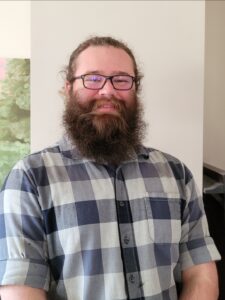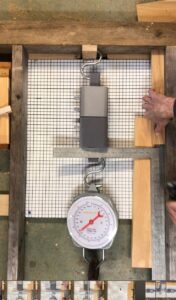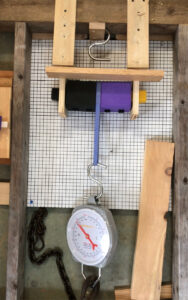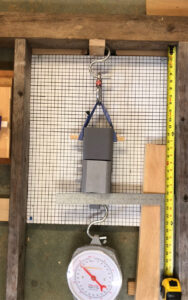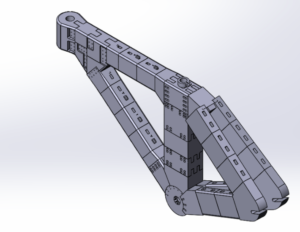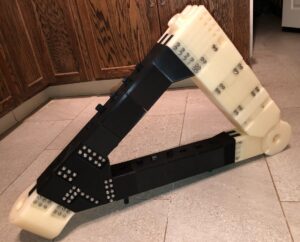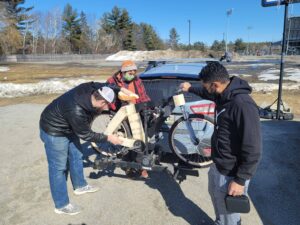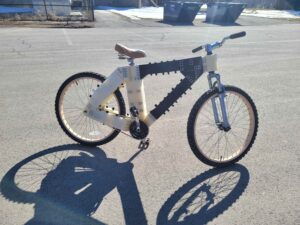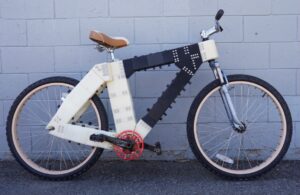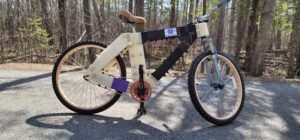Team #6 3D Printed Bicycle
Project Summary
Thank you for visiting our website,
Our team has been tasked with designing a full sized, rideable, 3D printed bike frame. Our client, Emily Jackson Sanborn, works for the Orono school system as a librarian and is an advocate for STEM programs in schools. Some of the requirements for this project are the following: the pieces must be able to be printed using a Flashforge Finder 3D printer, the filament must be PLA, the printing volume cannot exceed 5in x 5in x 5in, no adhesives to join parts, the frame must be rideable, and it must be able to be reproduced at the school.
Meet the Team
Abdullah Albutayyan
My name is Abdullah Albutayyan. I am studying Mechanical Engineering of Technology at University of Maine. I chose the 3D printed bicycle frame project because I like the 3D printing staff and designing things. This project will give the opportunity to design and print things.
Douglas Bolstridge
I am in my fourth year at UMO as a non-traditional student in the Mechanical Engineering Technology program. My professional interests include mechanic work, construction, and wood working. I chose this project because the presented challenges interested me.
Ryan Ehrenberg
Hi, my name is Ryan Ehrenberg, I am currently in my fourth year at UMaine as a senior studying Mechanical Engineering Technology. The work that interests me is SolidWorks/other cad programs, design, and machining. I chose this project because I am interested in 3D printing and the challenges presented by the project.
Ryan McNeilly
My name is Ryan McNeilly, I’m a 5th year Mechanical Engineering Technologies major. Some of my professional interest would be working in SOLIDWORKs and 3D printing. I chose to work on the 3D printed bike frame because I love a good challenge.
Weekly Updates
11/16/2020
The team has begun to create a more finalize version of the bike frame as a SolidWorks assembly. We are also coming up with different possible designs for the rear wheel supports.
11/23/2020
The team is still working on the finalized version of the bike frame. We have also performed tests on the cotter joints to see how they would perform certain loading conditions. One test was performed by applying a force to the cotter pin until breaking at 350 lbf (1). Another test was performed by supporting the cotter joint on either end by the pins and applying a force down on the middle until reaching 500 lbf (2). The third test was performed by supporting the joint using a peg through one of the holes on the female piece and applying a force to the male piece until breaking at 480 lbf (3).
11/30/2020
The team has chosen a final design for the bike frame, specifically the rear wheel supports. We have also done the calculations for the bearing load on the rear wheel as well as the calculations relating to the bolts, specifically the clamping load, and tensile stress area.
1/28/2021
Over winter break, approximately 2 weeks (336 hours) of print time was spent printing the pieces of the frame. As of now, all that remains to be printed is the two rear triangles. When printing is completed within the next two to three weeks, we will be able to begin the testing phase of the frame. If the frame fails, we will redesign the part(s) that broke and perform the tests again. When we have a design that doesn’t fail, we will begin working on optimizing the frame. Below is what the frame currently looks like. There are 38 parts, not including hardware, and the different colors are a result of using tough PLA for high stress concentration areas (the clear segments).
3/13/2021
The first design has been completely printed and assembled. On the 13th, the bike completed several test rides with only one minor break. After the test rides, the main concerns to focus on when doing design revisions are the height of the wheel base off the ground since then tilted to the side (i.e. when turning) the pedal scrapes the ground, as well as the piece used to secure and adjust the height of the seat since after the first test ride it snapped.
4/23/2021
After the first test, several pieces were redesigned to improve the performance and functionality of the frame. The pieces redesigned were the seat post, the bottom bracket, and the piece that connects the right rear triangle to the bottom bracket. We plan on continuing testing until the project is due to look for areas we could still improve the frame.
5/3/2021
The project is complete and has been successfully handed off to our client, Emily Jackson Sanborn. See photo below for final build.



